Otoy releases OctaneRender 2021.1
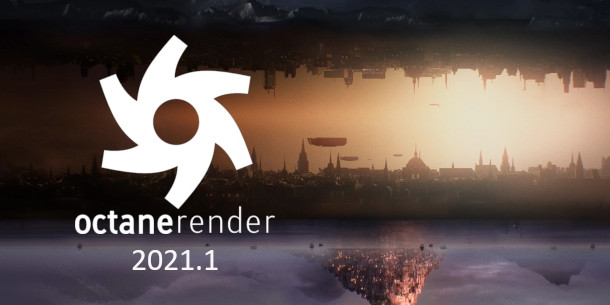
Originally posted on 25 May 2021. Scroll down for news of the stable release.
Otoy has released OctaneRender 2021.1 XB1: the first public beta of the latest version of the GPU renderer.
The release improves performance on current Nvidia Ampere GPUs, adds a new Boolean clipping material, improves volumetric rendering, and refactors the software’s handling of AOVs.
It is also the first version of OctaneRender to be available for Windows and Linux only, support for macOS now having been moved entirely to the newer Octane X edition.
Faster on Ampere and Turing GPUs, but old Kepler cards are no longer supported
OctaneRender 2021.1 improves performance of the renderer on Nvidia’s current Ampere GPUs, including the GeForce RTX 30 Series gaming cards and RTX A workstation cards.
Deformation motion blur and blur on animated instances is now roughly “1.5x faster in production scenes”.
In addition, RTX ray tracing, also available on GPUs using Nvidia’s older Turing architecture, has been improved, with “most production scenes” using RTX ray tracing rendering “1-5% faster”.
Otoy has also dropped support for many of Nvidia’s old Kepler cards, now at least seven years old: OctaneRender now requires a Nvidia GPU with a Compute Capability of 3.5 or higher.
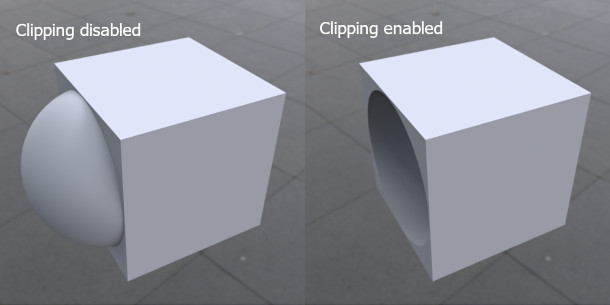
New Clipping material enables real-time Boolean operations with automatic texturing
New features in OctaneRender 2021.1 include a shader-based Boolean clipping system, which enables users to apply a clipping material to a volume, mesh or Vectron formula and use it for Boolean subtractions.
Unlike conventional Boolean modelling, the new surfaces this creates can be filled automatically with the parent object’s material or textures, using the clipping material’s UV set.
In addition, a new Mesh Volume SDF node converts a mesh to a Signed Distance Field, making it possible to perform Boolean unions between conventional meshes and OctaneRender’s Vectron procedural primitives.
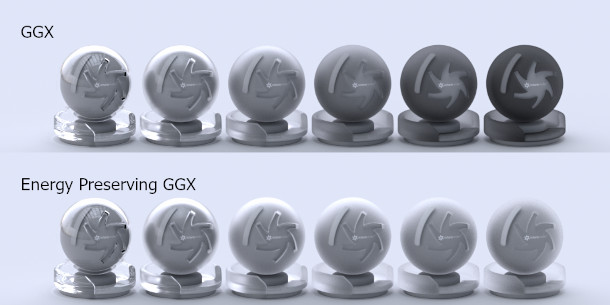
Materials: new energy-preserving GGX BRDF model and updated hair BSDF model
OctaneRender 2021.1 also introduces a new energy-preserving GGX BRDF model, available in the Glossy, Metallic, Specular and Universal materials and Metallic layer and Specular layer nodes.
It is intended to prevent energy loss as the roughness of a surface increases, which resulted in the unexpected darkening of rough surfaces in renders using the old GGX BRDF model.
The software’s hair BSDF model has also been extended with support for randomising hair roughness, and for the Zinke model for diffuse scattering, also used in renderers like Arnold and RenderMan.
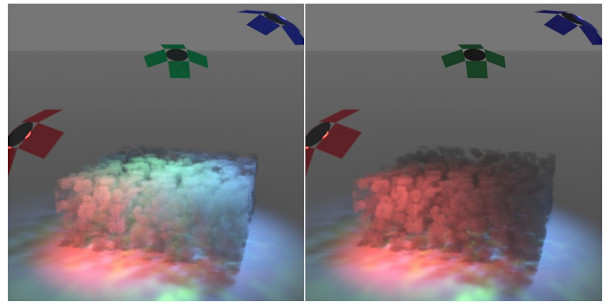
OctaneRender 2021.1 supports volumetric light linking. The image on the left shows three coloured lights scattering inside a volume, reduced to one via light linking in the image on the right.
Volumetric rendering: light linking provides better control over which lights affect a volume
The software’s volumetric rendering capabilities have also been extended, with support for volumetic light linking making it possible to specify which lights will scatter inside a volume.
In addition, the number of volumes that can overlap in one location has been raised to 16; and volumes can now use textures that rely on user instance IDs, like instance colour.
Volumes are also handled better in Cryptomatte AOV passes: you can find more details in the forum thread.
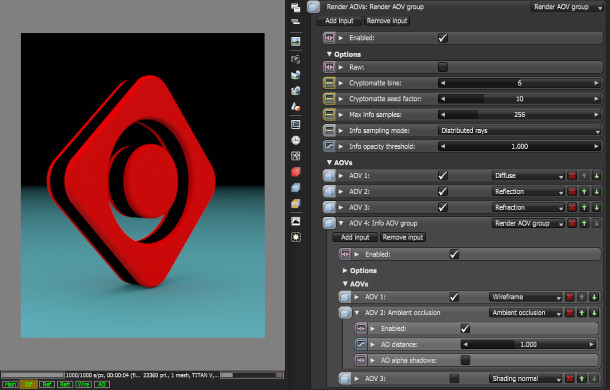
Support for custom AOVs and global texture AOVs
Otoy has also refactored OctaneRender’s (Arbitrary Output Variable) system, used to generate render passes, adding support for custom AOVs and global texture AOVs.
A new system of render AOV group nodes enables users to add an arbitrary number of inputs, then connect specific render AOV nodes to them, making it possible to create custom AOVs.
Render AOV groups can be nested, and whole groups enabled or disabled in one go.
It is also now possible to apply a texture or OSL shader to an entire scene, including or excluding the environment, and render that texture or shader as an info AOV.
Better colour processing, including support for OCIO 2
Colour processing has also been improved, with the option to assign colour spaces individually to textures.
Users can assign any of Octane’s built-in colour spaces, including ACEScg, or any supported by the OpenColorIO (OCIO) standard – updated to OCIO 2 in OctaneRender 2021.1.
The release also introduces a wider gamut for RGB colours than the standard sRGB gamut, and makes it possible to specify the white point for spectral colours.
Smaller features and performance improvements
Other changes in OctaneRender 2021.1 include updates to the Scatter on surface system, and new texture nodes, texture math operations and projection nodes. You can find more details in the forum thread.
Performance improvements include updates to OctaneRender’s AI Light algorithm, which Otoy says reduces noise in beauty passes and accelerates final-frame renders by “2x or more”.
Now officially no longer a Mac renderer
OctaneRender 2021.1 is also the first version of the software to be available for Windows and Linux only, support for macOS having now been moved entirely to Octane X, the new Metal-native edition.
The current release, Octane X PR 11, does not include any of the new features, but an “Octane X version of 2021.1 [will follow in] a few weeks”.
No sign of the new multi-render system yet
However, one major feature not included in the initial XB1 build is the new multi-render system.
Originally announced last year, the much-anticipated system will enable users to swap between Octane itself and any supported third-party renderer.
You can find more details in our original story on OctaneRender 2021.
We’ve contacted Otoy to find out whether it will be added to OctaneRender 2021.1 before the stable release, or whether it is scheduled for a future version, and will update if we hear back.
Updated: Otoy tells us that multi-render is scheduled for OctaneRender 2021.2, along with the new version of Brigade, its real-time path tracing render engine.
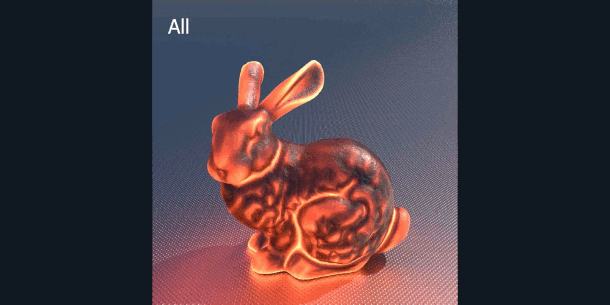
Updated 29 October 2021: OctaneRender 2021.1 is now available as a stable release.
In addition to the features covered above, the update adds a set of new texture and texture projection nodes, listed in this forum thread.
Highlights include Volume to texture, which renders an OpenVDB volume to texture maps in slices; and Curvature (shown above), which generates curvature, concavity or convexity maps from 3D geometry.
The final release also adds a USD importer, making it possible to import and render assets in USD format.
It’s described as a “first implementation”, and currently only supports UsdPreviewSurface materials; and lacks support for motion blur and proper support for camera import.
System requirements and pricing
OctaneRender 2021.1 is available for 64-bit Windows 7+ and Linux. Integration plugins are available for 21 DCC applications.
At the time of writing, the current build of Octane X is still based on the 2020.1.5 SDK.
Enterprise box licences – perpetual licences for the standalone edition and one integration plugin, plus subscription access to the remaining plugins – currently start at €699.
Subscriptions give access to all of the plugins and cost €19.99/month or €199/year for use on up to two GPUs, or €29.99/month or €299/year for unlimited GPUs. RNDR+ subscription bundles cost €479.40/year.
The Blender, DAZ 3D, Unity and Unreal Engine plugins are available free for use on a single GPU via OctaneRender Prime. Prime does not include OctaneRender standalone, or support network rendering.
In addition, 11 plugins, including 3ds Max, Cinema 4D and Maya, are available for use on a single GPU via the free trial of Octane X for macOS. It includes the standalone edition, but not network rendering.
Read a full list of features in OctaneRender 2021.1 in Otoy’s forum thread
